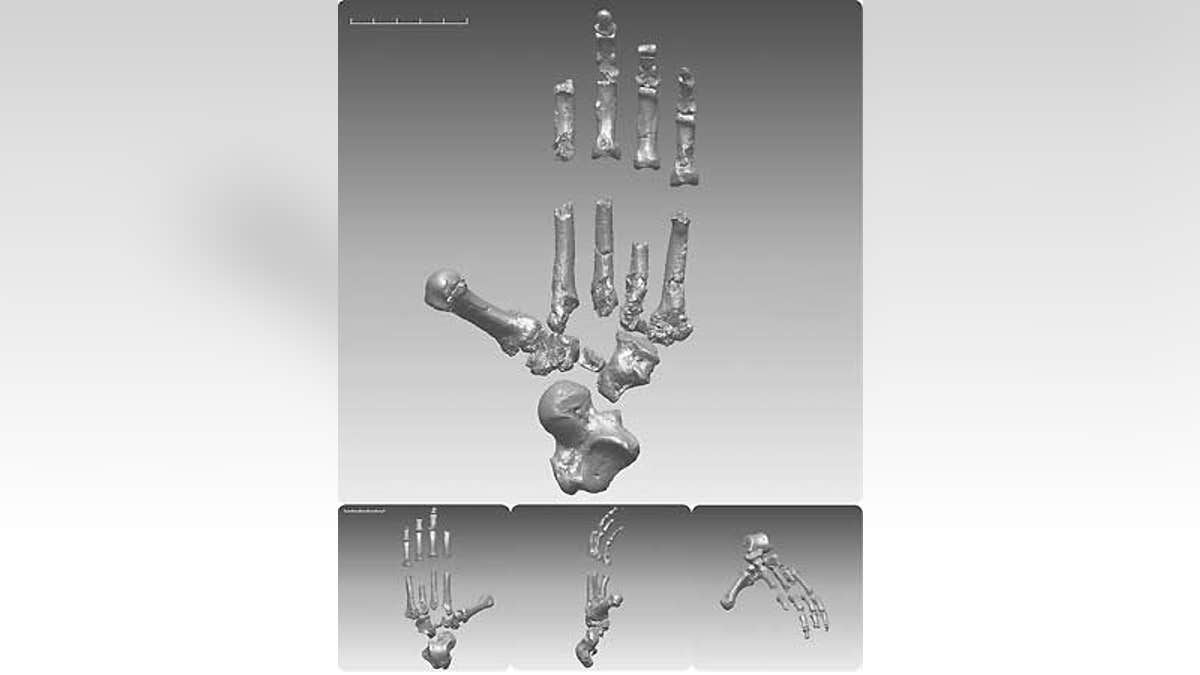
The skeleton of Ardipithecus ramidus, an ancient fossil dubbed "Ardi," may radically change our ideas about mankind's origins. (Science/AAAS/Handout)
After 15 years of rumors, researchers in the U.S. and Ethiopia Thursday made public fossils from a 4.4-million-year-old human forebearer they say reveals that our earliest ancestors were more modern than scholars assumed and deepens the evolutionary gulf separating humankind from today's apes and chimpanzees.
The highlight of the extensive fossil trove is a female skeleton a million years older than the iconic bones of Lucy, the primitive female figure that has long symbolized humankind's beginnings.
All told, an international research team led by paleoanthropologist Tim White at the University of California, Berkeley, unveiled remains from 36 males, females and young of an ancient pre-human species called Ardipithecus ramidus, unearthed in the Awash region of Ethiopia since 1994. The creatures take their scientific name from the word for root in the local Afar language.
"It is not a chimp and it is not human," said Dr. White. "It gives us a new perspective on our origins."
Already, the discoveries have experts reworking the human pedigree. "They are extraordinary fossils," said anthropologist Alan Walker at Pennsylvania State University, who wasn't part of the project. They undoubtedly will shape debates about human origins for years to come, as scholars argue whether these creatures should be counted among our most ancient direct ancestors or cataloged as an intriguing dead-end.
For more on this story, read the full story in The Wall Street Journal.




















